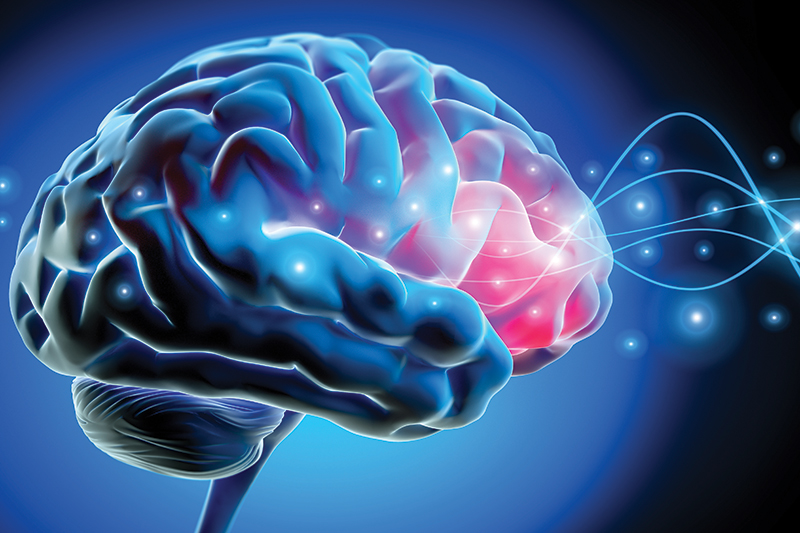I have studied body-centered Gestalt therapy at Hartford Family Institute for the past 21 years and in that time I have learned many things, though perhaps none more important than this: Nothing can happen in therapy until a client can at least touch into the feeling of safety. Why is this true? Without a feeling of safety, we remain in fight, flight, freeze, or shut down. In other words, we remain in places of protection, of vigilance, places in which we cannot let our guard down to be open and connect. While our ability to fight, flee, freeze, or shut down serves an important purpose in the midst of danger, if our nervous system gets stuck in the “on position” as a result of trauma, our ability to experience life on its deepest level becomes diminished.
Essentially, there are three parts to our autonomic nervous system: shut down, the oldest part, clocking in at 500 million years old; the fight, flight, or freeze response, coming in at 400 million years old; and the newcomer on the scene, the part that creates a feeling of well-being, only 200 million years old. While the oldest parts are reptilian, the youngest part is mammalian. The older parts are about protection, the newer part is about connection. When we can calm the nervous system down, our pre-frontal cortex (as opposed to our “fire alarm” amygdala that ignites our reptilian responses) comes on-line and we are able to relax as we take in the world around us with curiosity and delight.
Is Unhealed Trauma the Real Public Health Crisis?
Dr. Nadine Burke-Harris is the co-founder of the Adverse Childhood Experiences Project in San Francisco. Adverse Childhood Experiences (ACEs) are defined as “preventable, traumatic early experiences ranging from exposure to violence, poverty, and neglect to physical, emotional, psychological, and sexual abuse.” Dr. Burke-Harris realized that trauma causes more than psychological and emotional damage; it also makes children more prone to diseases like asthma and diabetes. There is an ACEs risk assessment that is eye-opening to take. It helps us identify and recognize our own experiences of trauma as well as see the impact of our behaviors on our children and those around us, i.e., how we can cause trauma to others.
The implications of all this are immense. We are hearing it said that racism and gun violence are public health crises. What if these public health crises both result from unhealed trauma? What if the growing political polarization and villanization of “the other” it entails is a result of unhealed trauma? What if nationalism and white supremacy are public health issues, a result of unhealed trauma? What if the inclination to jettison democracy for fascism is a public health issue and a result of unhealed trauma? The good news is that if this is so, then the path to healing is clear: We must help people process and integrate their trauma.
Unintegrated Trauma Manifesting as Racism?
The work of psychotherapist Resmaa Menakem is extremely helpful here. In his book, My Grandmother’s Hands: Racialized Trauma and the Pathway to Mending Our Hearts and Bodies, Menakem argues that unintegrated trauma is the basis for police violence against black and brown bodies. It is a result of the trauma officers experience on the job, witnessing death and destruction on a regular basis, which can cause officers’ nervous systems to register black and brown bodies as a threat that must be addressed in the most aggressive ways.
Menakem argues that white people’s racism is a matter of the unintegrated trauma from the brutality and torture of the Middle Ages that is handed down through the generations. The trauma that brown and black bodies experience is a result of the history and ongoing legacy of slavery. Knowing that any encounter with the police might result in incarceration or even death, that any encounter with a white person might involve an insult, a humiliation, or an act of violence creates stress that diminishes quality of life and health and well-being in very real and frightening ways.
For Menakem, all three groups—white people, the police, and black and brown people—are suffering from trauma that has not been addressed that, then, creates a cycle of more pain and more trauma for everyone. Thankfully, Menakem offers simple exercises we can do when we find ourselves in stressful circumstances, exercises that can keep us from acting out our trauma on others. What if these exercises became an essential component in the training of police officers, teachers, parents, and children?
Heal Ourselves, Heal Our Planet
Menakem is telling us that our nervous systems are like a manual transmission in a car. We have the power to downshift—to calm and comfort ourselves and, therefore, to find peace for ourselves—and I don’t think it’s hyperbole to suggest that from there, peace for the planet as well.
What I learned at Hartford Family Institute is true—it all boils down to safety. If we can find a sense of safety within ourselves by regulating our nervous systems, we can create a ripple effect of safety for everyone. It is from that place that the flourishing of mind, body, and imagination occurs and abundance for all becomes possible. This, it seems to me, is the vital work we are called to do in this urgent hour.
Rabbi Donna Berman, PhD, is the Director of the Human Relations Training Program at Hartford Family Institute (HFI) and Executive Director of the Charter Oak Cultural Center. Located in West Hartford, HFI is a psychotherapy institute that has been providing exceptional outpatient psychotherapy treatment and in-depth body psychotherapy training programs worldwide since 1969.
Visit: hartfordfamilyinstitute.com for more information.
